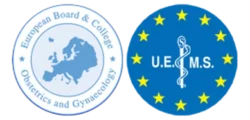Position Statement from the European Board and College of Obstetrics & Gynaecology (EBCOG)
Medical Abortion
n
The provision of safe abortion is crucial to the public health of all communities. WHO advises that the choice of abortion should be readily available to women in all national healthcare systems.(1) For more than 25 years medical abortion with combined mifepristone and misoprostol has proved to be safe, effective and acceptable. Non- surgical methods of abortion have been developed for both first and second trimester abortion. Medical abortion not only increases access but there is evidence that abortions are done at lower gestations, which is both safer and more acceptable to women. (The risks of terminating a pregnancy increase with gestation). Furthermore medical abortion in the early first trimester offers the possibility of having the abortion at home or in a primary healthcare clinic, while medical abortion at later gestations provides an alternative to highly skilled surgery which is not always available.
n
nnAbortions done according to medical guidelines carry a very low risk of complications.(2) On the other hand, unsafe abortions continue to contribute substantially to maternal morbidity and death worldwide. In Europe, the association of restrictive abortion laws and maternal mortality is best illustrated in Romania which saw a dramatic rise in maternal mortality when abortion was suddenly restricted in 1963, and then an equally dramatic decline after abortion was legalized in 1988.(3) There is evidence that unsafe abortions still take place in some parts of Europe.(4) Although clandestine medical abortions are likely to be of lower risk than other illegal (usually surgical) approaches, there is substantial variation in the medical regimens used, and complications such as prolonged or heavy bleeding and infection, associated with use of incorrect dosages, mean that abortion should always be carried out with access to a healthcare provider. Medical abortion services using simplified protocols are a further step towards increasing access and acceptability, as well as helping to de-medicalize abortion.(1,5)
n
nnThe safety of an abortion procedure depends on a number of factors, but mainly the skill and training of providers in the method used, as well as the environment. Thus, training in abortion care is fundamental and should be included in the curriculum for anyone training in the specialty of gynaecology and obstetrics. It is important that all trainees are versed in abortion methods and know how to deal with complications.
n
n
Ready access to a free and legal abortion service with no delays for unrequested counselling and no obligatory waiting or requirements for parental or partner consent are essential. Furthermore access to immediate post abortion, long acting contraception is crucial in the prevention of future unwanted pregnancy. (2)nnMedical abortion is one of the safest procedures in medical practice, with minimal morbidity and mortality, and as such there appears to be no good reason to restrict the licensing of mifepristone and misoprostol. EBCOG considers that its universal availability in all countries in Europe is fundamental to women’s health and well-being. EBCOG recommends that training in abortion care is mandatory and is included in the curriculum for anyone training in the specialty of gynaecology and obstetrics. Finally, EBCOG endorses the WHO safe abortion guidance (2), which recommends that abortion should be simplified as far as possible to improve access.
n
nnReferences
- n
- WHO. Health worker roles in providing safe abortion care and post-abortion contraception. World Health Organization, Geneva; 2015nn http://www.who.int/ reproductivehealth/publications/unsafe_abortion/abortion-task-shifting/en/
- WHO. Safe abortion: technical and policy guidance for health systems. Second edition. Geneva: World Health Organization, 2012.nn http://apps.who.int/iris/bitstream/10665/70914/1/9789241548434_eng.pdf (accessed 11 November 2015).
- Stephenson P, Wagner M, Badea M, Serbanescu F. Commentary: the public health consequences of restricted induced abortion–lessons from Romania. Am J Public Health 1992; 82: 1328-31.
- Sedgh G, Singh S, Shah IH, Åhman E, Henshaw SK, Bankole A. Induced abortion: incidence and trends worldwide from 1995 to 2008. Lancet 2012; 379: 625-32.
- Oppegaard KS, Qvigstad E, Fiala C, Heikinheimo O, Benson L, Gemzell-Danielsson K. Clinical follow-up compared with self-assessment of outcome after medical abortion: a multicentre, non-inferiority, randomised, controlled trial. Lancet 2015; 385: 698-704.
n
n
n
n
n
nnDr Kevin Sunde Oppegaard (Department of Gynaecology, Lillehammer, Norway) wrote the first draft of this Paper which was peer reviewed by the following: Professor Kristina Gemzell-Danielsson, Karolinska Institutet, Karolinska University Hospital, Stockholm, Sweden; Professor Anna Glasier, University of Edinburgh, Scotland; Professor Ioannis Messinis, University of Thessaly, Larissa, Greece; Professor Vlad Tica, Constanta County Emergency Hospital, Romania; Professor Paul Van Look, Val-d’Illiez, Switzerland. Professor Allan Templeton, the Chair of the EBCOG Position Statements Group, finalised the document.
n
n
#AudienceEngagement #Blog #Medicalabortion
